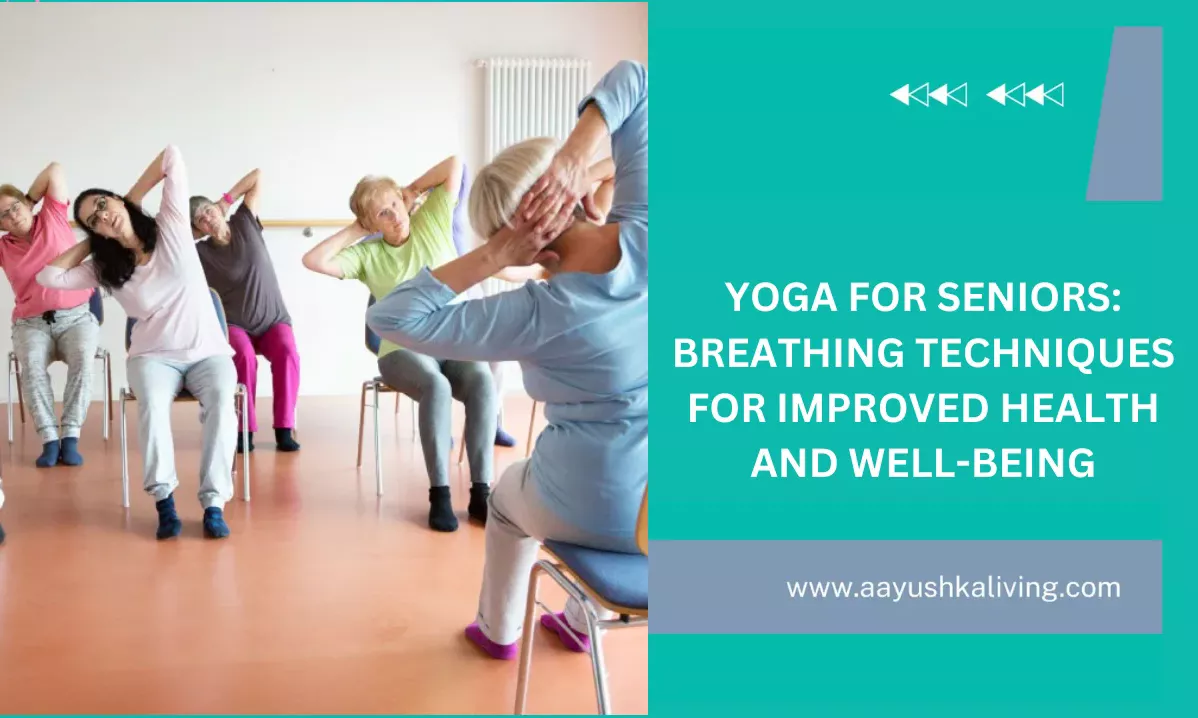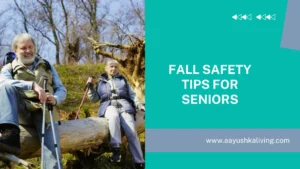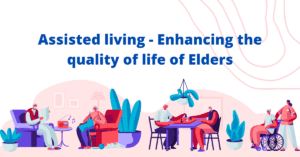Yoga may be modified to accommodate various physical needs and abilities, making it advantageous for older persons and people with limited flexibility.
Frequent yoga can enhance balance and flexibility, reduce stress, and improve sleep. With more than 14 million Americans over 50 practicings yoga in 2016, up from four million in 2012, yoga is becoming increasingly popular among seniors.
The majority of the time, elders can practice yoga. Many people with busy schedules only have time for hobbies like yoga when they are retired.
Despite the propensity for increased sedentary behavior, retirement is the ideal time to adopt healthy behaviors that increase longevity.
Regular yoga attendance fosters a sense of connection and community with the instructors and other students. It has been demonstrated that these social relationships are unexpectedly crucial for preserving health and well-being as we age.
Exercises for Breathing in Elderly Adults:
The term “pranayama” refers to the breathing exercises utilized in yoga. In his seminal work Yoga Sutras, the creator of yoga, Patanjali, refers to breathing as the “heart of yoga.”
Nonetheless, there appears to be some reluctance among the elderly population regarding pranayama and yoga breathing. Much of it stems from the false belief that breathwork is risky or inappropriate for elderly people.
Mastering various pranayama, or rhythmic deep breathing, practices can have particular impacts on the mind and body.
Yet, it’s crucial to learn these skills from an experienced instructor who can advise you on the best times, frequency, and length of practice. The lungs, heart, and nerves can strengthen with correct pranayama practice, but bad practice can be harmful. Prana (life force energy) can become destructive if not properly handled; thus, respect and caution are required.
Nadi Shodhana or Alternate Nostril Breathing:
Inhaling deeply through your left nostril while pinching your right nostril shut is a fast yoga exercise to reduce anxiety.
Exhale via your right nostril after switching to it. Continue with soft focus and effortless breathing for three to five minutes. Higher versions include chakra focus and controlled breathing.
Anulom Vilom Pranayama:
To perform, sit upright with your eyes closed and breathe through each nostril alternately. Advantages include better attention, vigor, less stress and anxiety, and better sleep quality. Moreover, it aids with cough and skin conditions.
Ujjayi:
When upset or irritated, close your throat and breathe through your nostrils while generating sounds resembling ocean waves.
Ujjayi pranayama must be practiced under a teacher’s supervision and is not advised for people with low blood pressure. The regular practice of pranayama increases energy and promotes effortless breathing.
Shiitali Kumbhaka:
By folding your tongue lengthwise, you can take a deep breath. You should close your mouth, hold your breath for eight counts, and then sigh through your nose.
Maintain for a total of eight minutes while taking eight breaths. After that, you massage the body part that is ill (as prescribed in yoga therapy).
Reduced pitta (heat) in the head, neck, and upper digestive system are advantages of this approach. It should not be used if you have asthma, bronchitis, or persistent constipation.
Siitkari Kumbhaka:
Like Shiitali, the Siitkari technique entails making the “s-s-s” sound with your tongue while inhaling your nose and expelling through your mouth.
Pitta is lowered, and the senses are cleansed, which are advantages, but it should be avoided for an hour before or after meditation. One pranayama technique only should be used at a time.
Kapalbhati Pranayama
When Kapalbhati Pranayama is practiced, blood flow increases and glowing skin is promoted by forcefully exhaling while yanking the stomach inside.
This breathing method increases blood circulation, energizes the body and nervous system, and helps with breathing problems. Yet it should be avoided by people with specific medical issues.
Brahmari:
Try the Brahmari breath technique: inhale normally, then hum like a bee while expelling, to improve circulation and alertness.
Take ten of these breaths, then take ten more while closing one ear. Avoid reclining down and, with a teacher’s help, think about partnering with the Yoni mudra.
Bhastrika:
Need supervision while performing this activity. 20 short bellows breaths should be taken via the left nostril, followed by 20 breaths through the right while the left is closed. removes mental, emotional, and physical obstructions by drawing prana.
Surya Bhedana:
Breathe in through your right nostril and out through your left for 6–10 minutes, just like Nadi Shodhana.
Avoid if you have heart illness, high blood pressure, epilepsy, hyperthyroidism, peptic ulcer, or acidity. It warms and balances Vata.
Chandra Bhedana:
Use the left and right nostrils for six breaths, up to ten minutes, to minimize pitta. Not for the depressed, the psychologically unstable, the excessively mucous, or the sluggish eater. soothing air.
Active Yogic Breathing:
Slow and deep breathing via your nose should be practiced when strolling. Aim for 10 or more steps throughout each inhale and exhale while you count the steps. This combines an active lifestyle with the relaxing effects of breathing.
Conclusion:
Several ailments can be effectively treated with yoga without any danger. Everyone can benefit from these exercises, including those who have breathing difficulties or have recently been ill.
Regardless of age or potential medical issues, yoga and exercise should always come first if you want to live a long and healthy life. Respiratory problems can be worrying, but with a little caution, it is still possible to live a normal life.





